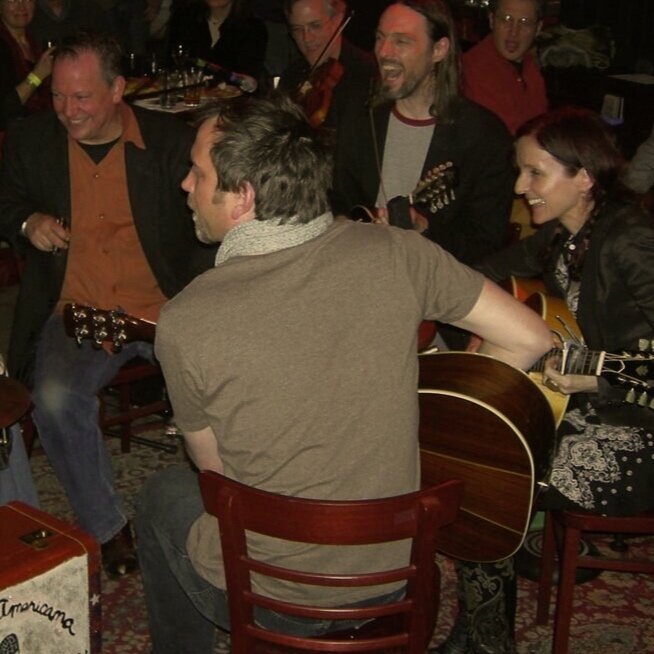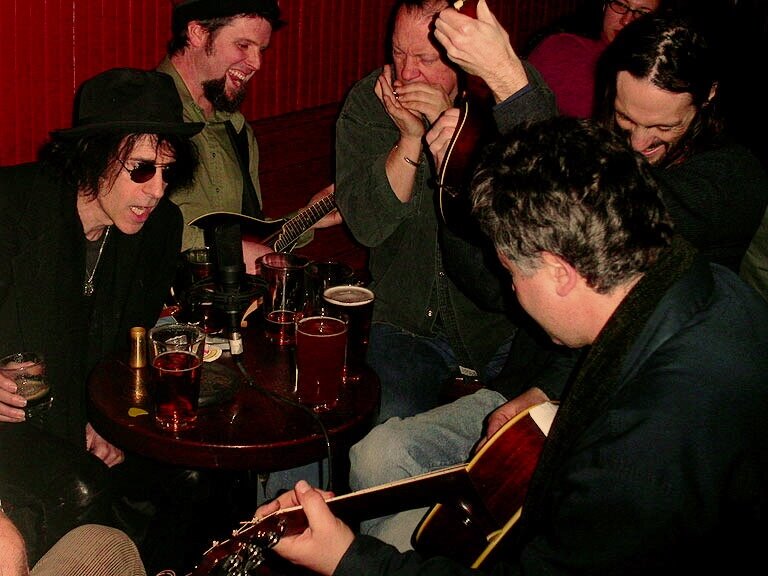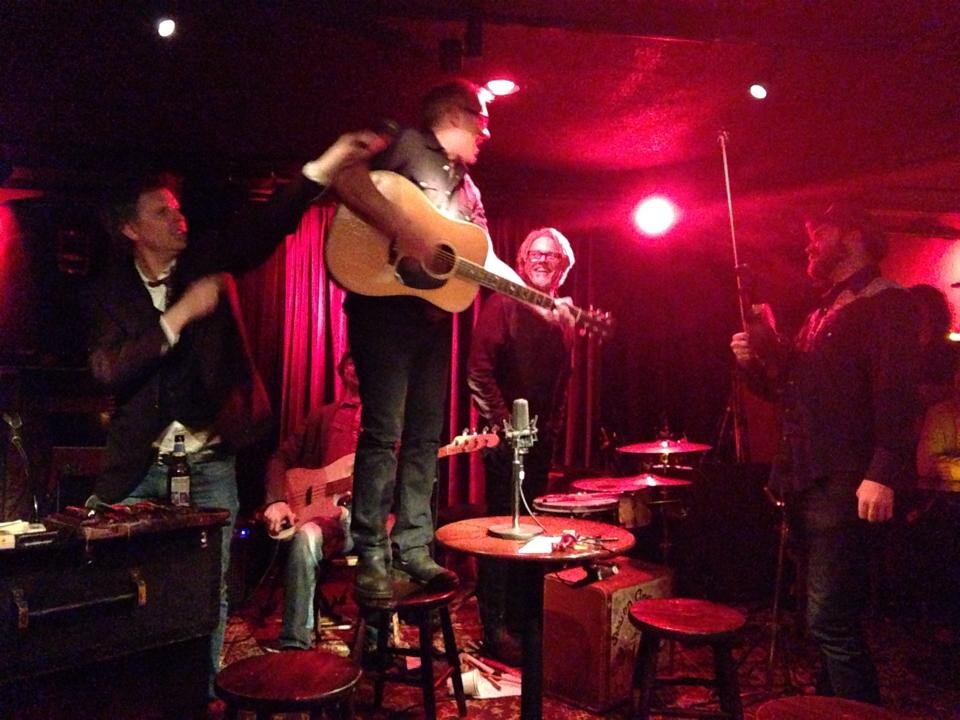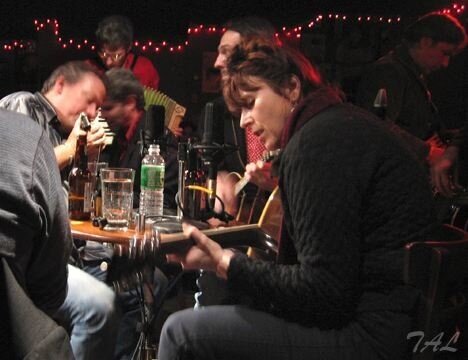Who would live in a castle ?
Who could afford it?
Well someone who liked to tell tales. Someone who bought the place and rebuilt it slowly to be liveable, lock stock and barrel.
He turned out to be someone who loved music and wasn't afraid of ghosts eh?
Well we met this other guy in Germany named Johnny but I digress ...
This is about the first day of our last tour in Ireland.
There's the agent and the promoter....ha it's more like Joyce and the tin whistle tale teller: Tom Stapleton and Sean Ryan.
Tom, the one who looked like James Joyce was serving us lunch (with his wife Lucy) by 3 that afternoon. Yeah I've heard some tales, but the talkin that day was of an epic proportion. This was a certified shillelagh from stem to stern. Hospitality, food and wine were the first thing, and then it was on to Leap castle, forbidding and gray.
We backed the van into his potted plants by the front door on the load-in, and well 24 hours ago we'd been at Logan.
Yes it was a classic castle keep (built in the 13 century), from the outside bleak and damp; and even inside the stones seem to seep but they were dry to the touch with a light coat of whitewash. And even if there might be ghosts in the upper rooms from deeds done long ago by the O'carroll clan, and there might be an Oubliette down below; folks came for the show. In fact it was cramped and crowded.
Tip your hat to the man who delivered enthusiasm to those who knew not a thing of us. It was a proper house concert (or castle concert), though it was a bit weird in the cramped center of that stone pile, the keep, claustrophobic and full. The booker knew what he was doing. Though we had to jerry rig the PA a bit, the sound went out fine.
It's Ireland.
Afterwards all the chairs were removed and a long dining table was placed before the 'stage' where we shared a delicious mutton stew and soon those two were hard at it, one vying to be more irish than the the other, but the tin whistle man, he who lived in a bloody castle, he had the gift and started with the tale of a man who just drank Guinness with a bit of brandy cake for seven years..."I don't take food." was what he said.
And then it was on to Francis O'neill, chief of police in Chicago; who around the turn of the last century compiled "O'neill's Music of Ireland '' a famous collection of hundreds of Irish tunes. As a young man in County Cork, he was press ganged by the British onto a ship that somehow sank in the south pacific. There he was marooned with another sailor, and finally rescued by a ship but, they were thrown below with the Chinese "slave rowers, who survived on one bowl of rice a day". One rower who had a one note flute, was so moved when Francis taught him an Irish tune on that flute, he shared his rice with Francis. Without sustenance the other castaway died, but Francis, he made it to California and on to Chicago (where he became the chief of police). Next thing you know Sean is playing that very tin whistle tune at the table. I tell you what, there were a lot of notes on there for a one note flute...It was beautiful.
And after that they were off again!
"King James lost the war for Ireland because he was swanning with the ladies in Dublin!"
Then Tom starts in on something about Queen Elizabeth and all the Irish oaks that were floated down the Blackwater river for the ships of the British navy or was it for one of her lovers?
Later that night as I drifted off to sleep in a proper irish bed awash in the art and history of the place. I wondered.
Then I heard "I don't take food". (echoing in my head).
Jim











